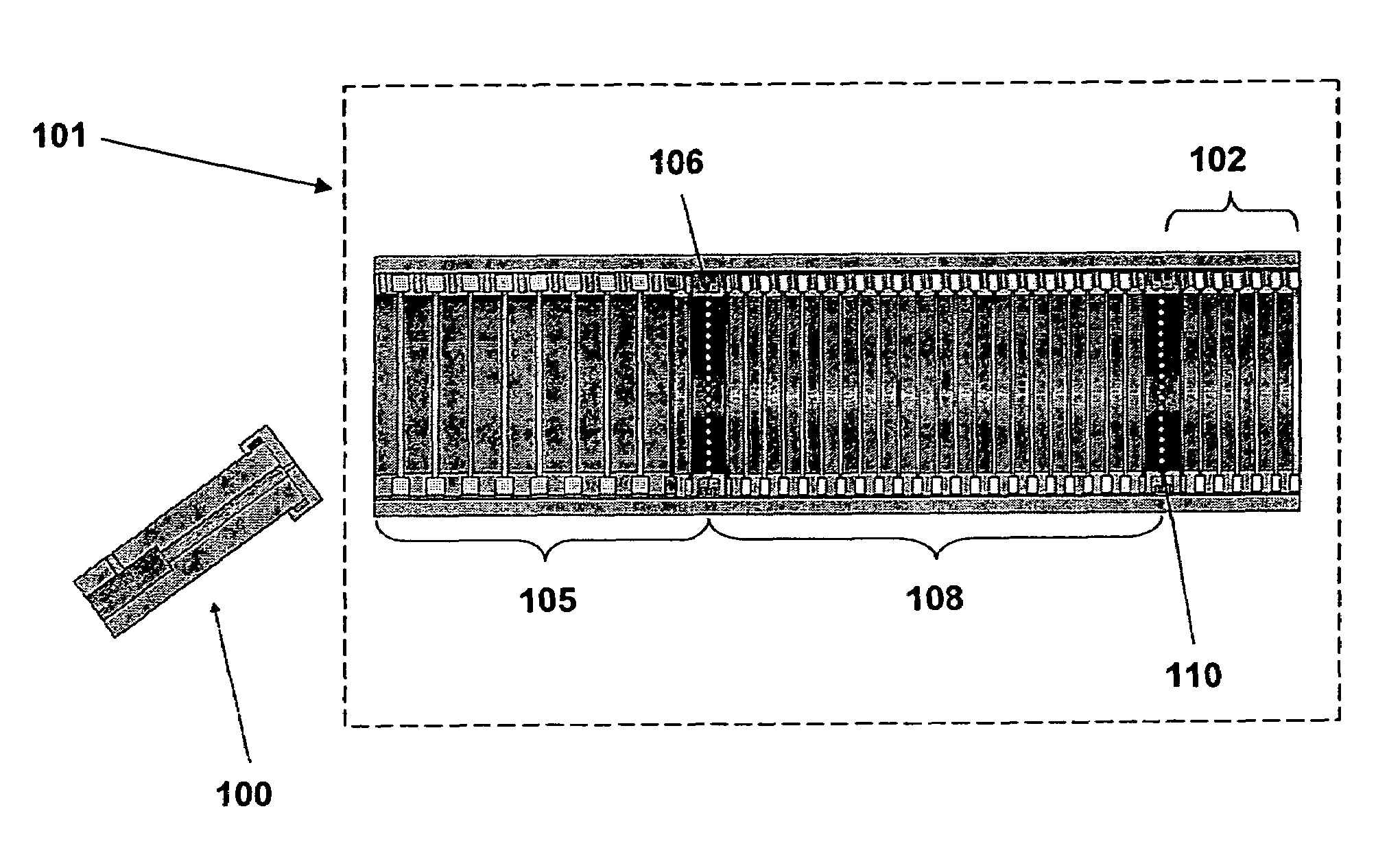Mass analysis of mobility selected ion populations
a mass spectrometry and ion population technology, applied in the field of ion characterization, can solve the problems of loss of resolution from low-field ims, routine differentiation between isomeric species using mass spectrometry, and inability to provide valuable fragmentation information from mssup>n/sup>analyses
- Summary
- Abstract
- Description
- Claims
- Application Information
AI Technical Summary
Problems solved by technology
Method used
Image
Examples
example 1
Measurement of Automatic Gain Control (AGC) on the Observed Intensities of Mobility Selected Demptide [M+2H]2+ Ions
[0070]By controlling the level of ions introduced and collected in the ion trap, automatic gain control (AGC) minimizes the effect of space-charging (March and Todd, Practical Aspects of Ion Trap Mass Spectrometry, Vol. 1, CRC Press, New York, N.Y., p. 10-11, 1995). Increases in linear dynamic range and spectral resolution are the primary benefits of AGC, which in turn have resulted in a large expansion in the application of QIT MS as an analytical technique. During normal QIT operation, the injection time of the electrosprayed ions is varied depending upon their abundance relative to a pre-defined target ion concentration.
[0071]When selected, the AGC feature performs a “pre-scan” of ions prior to initiating a mass scan. This “pre-scan” functions to estimate the number of ions entering the trap at a given time and adjusts the accumulation time according to the target io...
example 2
Measurement of the Variation of Resolving Power and Peak Area as a Function of Ion Gate Pulse Width
[0074]The ion mobility spectra shown in FIG. 4 illustrate the effect of ion gate pulse width on the observed peak area and resolving power for a 32 pmol / μL solution of cocaine. For the mobility spectra displayed in FIG. 4 the widths of the 1st and 2nd ion gates varied from 0.2 to 0.5 ms. Attempts were made to acquire data at ion gate pulse widths below 0.2 ms, however, no ion signal was observed. Commonly defined as ion drift time divided by the peak width at half height, the ion mobility resolving power observed for cocaine using the DG-IM-QIT instrument ranged from 70±6 to 37±1. These values on average were within 5% of the theoretical maximum resolution power40. The inset plot located in FIG. 4 shows the inverse relation between resolving power and peak area. While the intersection of the peak area and resolving power trends corresponded to an ion gate pulse width of ˜0.36, in order...
example 3
Measurement of Detection Limits and Linear Dynamic Range
[0075]To assess the limits of detection (LOD) and dynamic range of the DG-IM-QIT, calibration curves were constructed for the demtide [M+2H]2+ ion collected at different ion trap injection times (FIG. 5a). Each data point represents the average of a one minute SMM monitoring experiment. Because the ion trap scan cycle requires a period of reset prior to beginning the next scan, varying the injection time also changes the number of injection cycles performed during a fixed time period. Despite taking steps to normalize for the number of scan cycles and ion mobility pulses, the 4000 ms injection time possessed the greatest slope and analytical sensitivity (Skoog et al., Principles of Instrumental Analysis, 5th ed., Saunders College Publishing, Philadelphia, Pa., p. 13, 1998). The diminished slopes observed at smaller injection times resulted directly from the reduced number of ions available for analysis. While this plot, combine...
PUM
 Login to View More
Login to View More Abstract
Description
Claims
Application Information
 Login to View More
Login to View More - R&D
- Intellectual Property
- Life Sciences
- Materials
- Tech Scout
- Unparalleled Data Quality
- Higher Quality Content
- 60% Fewer Hallucinations
Browse by: Latest US Patents, China's latest patents, Technical Efficacy Thesaurus, Application Domain, Technology Topic, Popular Technical Reports.
© 2025 PatSnap. All rights reserved.Legal|Privacy policy|Modern Slavery Act Transparency Statement|Sitemap|About US| Contact US: help@patsnap.com



